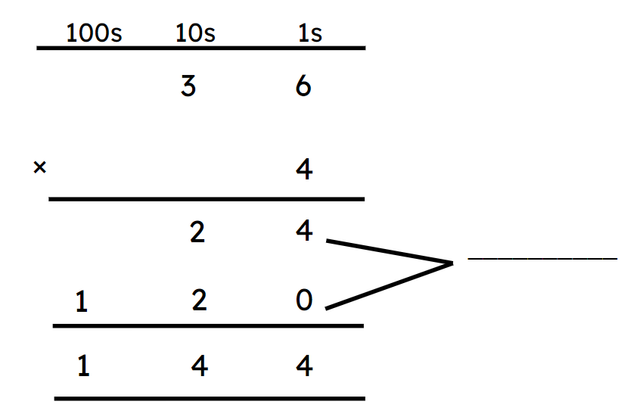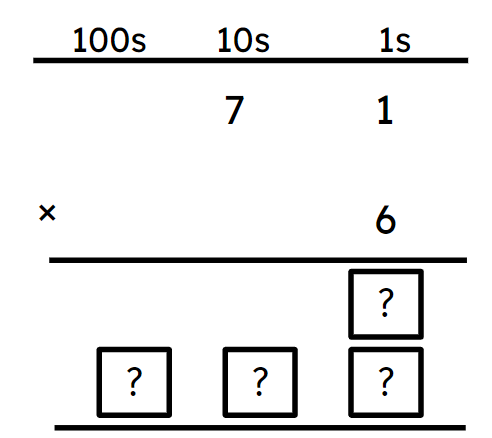Myths about teaching can hold you back
- Year 5
Multiply a 2-digit number by a 1-digit number using expanded multiplication (regrouping 10s to 100s)
I can use expanded multiplication to record regrouping from the 10s to the 100s.
- Year 5
Multiply a 2-digit number by a 1-digit number using expanded multiplication (regrouping 10s to 100s)
I can use expanded multiplication to record regrouping from the 10s to the 100s.
These resources were made for remote use during the pandemic, not classroom teaching.
Switch to our new teaching resources now - designed by teachers and leading subject experts, and tested in classrooms.
Lesson details
Key learning points
- If the product of the single digit and the tens number is greater than 100 then you regroup ten tens into one hundred.
- If the product of the single digit and the tens number is greater than 100 the partial product will be a 3-digit number.
- There are similarities between the representations of multiplication.
Keywords
Expanded multiplication - Expanded multiplication is a way of recording the steps focusing on partitioning one or more factors and showing partial products.
Regroup - The process of unitising and exchanging between place values is known as regrouping.
Common misconception
Pupils may not align or regroup correctly leading to an inaccurate calculation.
Model accurately what happens when we regroup from 10s to 100s. Why did this happen? How do we record this?
To help you plan your year 5 maths lesson on: Multiply a 2-digit number by a 1-digit number using expanded multiplication (regrouping 10s to 100s), download all teaching resources for free and adapt to suit your pupils' needs...
To help you plan your year 5 maths lesson on: Multiply a 2-digit number by a 1-digit number using expanded multiplication (regrouping 10s to 100s), download all teaching resources for free and adapt to suit your pupils' needs.
The starter quiz will activate and check your pupils' prior knowledge, with versions available both with and without answers in PDF format.
We use learning cycles to break down learning into key concepts or ideas linked to the learning outcome. Each learning cycle features explanations with checks for understanding and practice tasks with feedback. All of this is found in our slide decks, ready for you to download and edit. The practice tasks are also available as printable worksheets and some lessons have additional materials with extra material you might need for teaching the lesson.
The assessment exit quiz will test your pupils' understanding of the key learning points.
Our video is a tool for planning, showing how other teachers might teach the lesson, offering helpful tips, modelled explanations and inspiration for your own delivery in the classroom. Plus, you can set it as homework or revision for pupils and keep their learning on track by sharing an online pupil version of this lesson.
Explore more key stage 2 maths lessons from the Multiplication by partitioning leading to short multiplication (2 by 1-digit) unit, dive into the full primary maths curriculum, or learn more about lesson planning.

Licence
Prior knowledge starter quiz
6 Questions
Q1.210 can be partitioned into __________.
Q2.Lucas is chanting his 3 times tables: 3, 6, 9, ___. What comes next?
Q3.The number 256 can be partitioned into 2 hundreds, __________ and 6 ones.
Q4.Use expanded multiplication to calculate this question: 32 × 2 =
Q5.Calculate and sort the multiplication equations into ascending order.
Q6.The product is a 2-digit number. 47, 1 and 2 are its factors. It is greater than 50. What product could it be?
Assessment exit quiz
6 Questions
Q1.Look at the image. The arrow is pointing to the __________.

Q2.12 tens can be regrouped as hundred and 2 tens.
Q3.The digits '3' and '6' in the number 365 represent:
Q4.Match each multiplication with the correct regrouping.
0 regroup
Regrouping in 1s to 10s
Regrouping in 10s to 100s
Q5.Choose the correct partial products for this expanded method.



